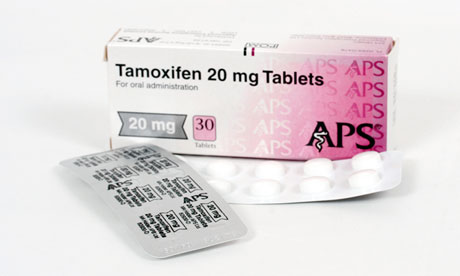
Tamoxifen, used to treat breast cancer, has saved the lives of millions of women. Photograph: Paul Beard Photo Agency/Alamy
Tamoxifen is the nearest thing we probably have to a wonder drug. Ask Richard Peto, the famous Oxford epidemiologist, who waxes lyrical about it. The British-invented drug, which is almost 50 years old, has changed the course of breast cancer by preventing recurrences, saving the lives of millions of women ? and it is cheap as chips because the patent has run out. It is prescribed for women whose tumours are responsive to hormones (most of them) for five years after surgery. Recent research has shown that it goes on preventing cancer if given for 10 years.
Now, the National Institute of Health and Clinical Excellence has launched a consultation on whether tamoxifen can be prescribed as a preventive measure to women with a family history of breast cancer. But giving any drug to someone who is healthy is a tricky decision. First do no harm, say doctors. Any drug has side-effects. No drug does the job it is designed for so exactly that it has no other effect at all on the body. So the risk of the drug has to be balanced against the risk of the disease.
This is what has happened with statins, which, as a huge number of middle-aged men and women will know, are being prescribed for life to those with raised cholesterol, which puts them at increased risk of heart attacks and stroke. Statins have very few side-effects. Tamoxifen, on the other hand, can make life miserable for some women, at least at the beginning.
Hot flushes and sweating are common ? the drug restricts the growth of cancer cells by interfering with their oestrogen supply, but reducing a woman's oestrogen levels brings on a menopausal state. Women who are prescribed the drug after surgery and want at all costs to prevent cancer coming back are highly motivated to deal with the side-effects ? some find avoiding tea, coffee and alcohol helpful, while others use complementary strategies such as acupuncture to cope. Others feel sick or suffer from indigestion, but that usually passes. Some put on weight and some get leg cramps. Less common side-effects are depression, headaches, vision problems and an increased risk of blood clots. Similar problems are reported with raloxifene, which also affects oestrogen levels.
In the end, it will be for each woman to weigh up the risks and benefits for herself. For many at high risk of cancer, it will be a huge relief to take a drug that provides some protection ? but others may decide it is not for them.
Source: http://www.guardian.co.uk/society/shortcuts/2013/jan/15/breast-cancer-drug-tamoxifen-side-effects
travis pastrana quinton coples a.j. jenkins riley reiff david decastro aj jenkins shea mcclellin
No comments:
Post a Comment
Note: Only a member of this blog may post a comment.